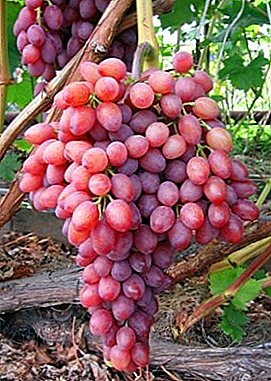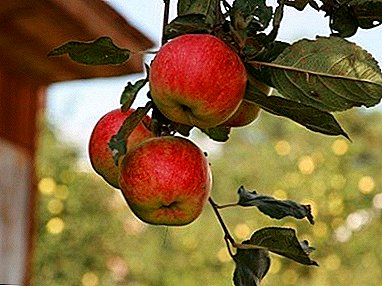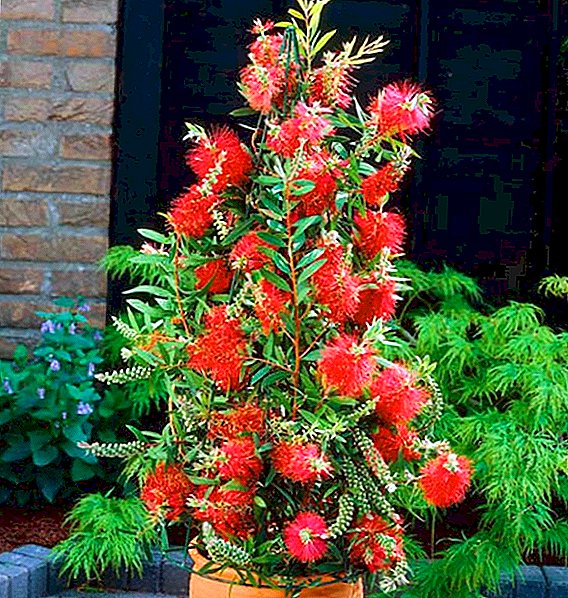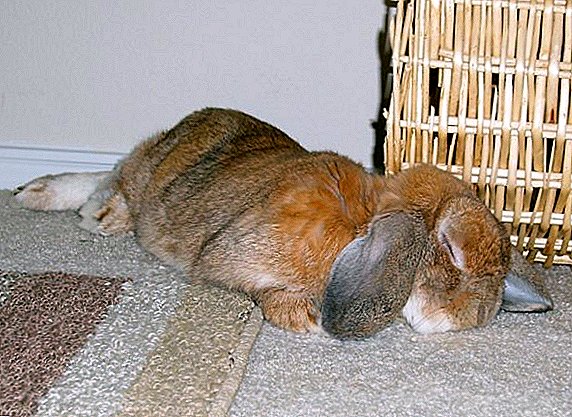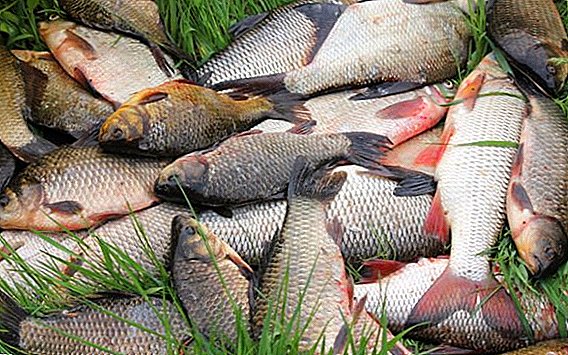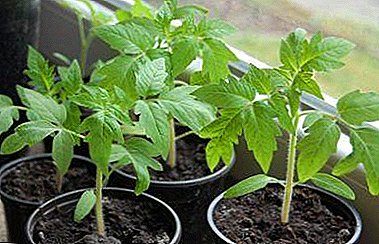 Like all animals, poultry are also susceptible to diseases and viruses. Geese diseases are one of the biggest problems that a host faces. They adversely affect the condition of birds and negatively affect the number of the herd. Since these birds are most susceptible to viruses, it is important to know what diseases they face, what their signs are and what treatment they may need.
Like all animals, poultry are also susceptible to diseases and viruses. Geese diseases are one of the biggest problems that a host faces. They adversely affect the condition of birds and negatively affect the number of the herd. Since these birds are most susceptible to viruses, it is important to know what diseases they face, what their signs are and what treatment they may need.
Geese infectious diseases
Most often, poultry is affected by infectious viral diseases. Almost all poultry farmers care about the prevention of disease among their pets, but it is not always possible to prevent the occurrence of a particular ailment. Poor nutrition, drafts, temperature fluctuations, parasites - all this can cause diseases. Below is a list of the main viral ailments that can affect geese.
Did you know? Geese, like swans, choose a mate for life, this happens at the age of about 3 years. And if their partner dies, then they are left alone and mourn for several years.
Aspergillosis
Pathogen: mold fungus that enters the respiratory tract of birds from the external environment (water, hay litter, soil, etc.).
Symptoms: lack of appetite, lethargy, reluctance to walk, the emergence of great thirst, sudden weight loss, difficulty breathing. The last symptom is due to the fact that when it enters the body, the fungus grows in size, grows and releases toxic substances that poison the bird.  Treatment spend "Nystatin" in the calculation of 30 mg per 1 kg of bird weight at a time, adding it to the feed. Give twice during the week. A solution of copper sulphate 0.05% per 10 mg per 1 l is also added to the drinking water. The success of treatment is not guaranteed in all cases, as the majority of the disease is fatal.
Treatment spend "Nystatin" in the calculation of 30 mg per 1 kg of bird weight at a time, adding it to the feed. Give twice during the week. A solution of copper sulphate 0.05% per 10 mg per 1 l is also added to the drinking water. The success of treatment is not guaranteed in all cases, as the majority of the disease is fatal.
Get acquainted with the peculiarities of care for such breeds of geese: Linda, Hungarian White, Rhenish, Kholmogory, Arzamas, Danish Legart.
Prevention is that the geese should not collide with the pathogen, i.e. it is necessary to check if the food is not infected with the fungus, or if the pets eat something spoiled. It is also necessary to replace the litter, because if it starts to rot, the risk of infection increases. Maintaining sanitary conditions, frequent airing and cleaning in the house, the use of special tools for its processing (for example, formalin) avoid the risk of infection. It is advisable to give chloramine to geese (a special medicine that is added to drinking water) for 10 days every few months.
Influenza
Causative agent is a microbe short sticks, which affects mostly young individuals. In the external environment it may not live long, as it is sensitive to temperature changes (it dies at +50 ° C). Viability lasts up to three days at normal temperature. The virus can live on the walls, bedding and floor, in the ground or sand. Gets through scratches and skin lesions. The main source and distributor of the disease is an infected bird.
Important! It should be remembered that at low temperatures the pathogen is preserved. If the temperature drops to -17 °WITH - The microbe lives for about 2 months. May also live long in the aquatic environment. - up to 50-55 days. The disease is fatal in 70-75% of cases.
Symptoms: weakness, a very sharp increase in temperature (up to +44 ° C), loss of appetite, which appear at the initial stage of the disease. Then the individual ceases to move, wings hang, problems with orientation, diarrhea. Often the legs or head swell. Similar symptoms develop in 3-5 days. It is easy to determine the disease and by the fact that geese sit with an open beak, wheezing is noted during breathing.  Influenza Dangerous Rapid Spread Treatment: most often the young goose is just slaughtered. His carcass plucked and scalded with boiling water. The remaining geese are moved to a clean new room for a while, while processing the old one.
Influenza Dangerous Rapid Spread Treatment: most often the young goose is just slaughtered. His carcass plucked and scalded with boiling water. The remaining geese are moved to a clean new room for a while, while processing the old one.
Prevention is in the timely processing of all surfaces of the house. It is very easy to neutralize the virus, because it dies when using a solution of bleach or carbolic acid.
Colibacteriosis
The reason the appearance of this disease is a violation of the birds: dampness, lack of ventilation, interruptions in food and poor-quality food, problems with getting fresh drinking water, sudden hypothermia or overheating. Colibacteriosis is manifested by toxicosis and poisoning of the bird.
Find out how many eggs a goose bears and what its egg production depends on.
Noticeable a symptom there will be diarrhea of green foamy structure. Accompanied by illness and fever, problems with nutrition.
Treatment do not conduct, sick individuals slaughtered.
For prophylaxis it is necessary to treat furatsilinom both the house and the birds. When patients are found, they must be thoroughly cleaned and thoroughly disinfected.
Neusseriosis
Causative agent - diplococcus neisseria. Streptococci, staphylococci, Proteus, etc. may also provoke the disease.  Symptomatology Neisseriosis is quite diverse. In females there is a reddening of the mucous membranes of the cloaca, the appearance of fibrous-type scabs, erosion, bleeding, and swelling of the tissues. Males most often have problems with the genitals - the penis swells and inflames, bends and falls out. Individuals lose their ability to mate. A sick bird begins to lose weight and weakens. In the event of sepsis, death is inevitable.
Symptomatology Neisseriosis is quite diverse. In females there is a reddening of the mucous membranes of the cloaca, the appearance of fibrous-type scabs, erosion, bleeding, and swelling of the tissues. Males most often have problems with the genitals - the penis swells and inflames, bends and falls out. Individuals lose their ability to mate. A sick bird begins to lose weight and weakens. In the event of sepsis, death is inevitable.
The disease is sexually transmitted. Males are predisposed to it. The disease affects individuals that have reached the age of 15 months.
We recommend to learn how to make a pond for geese and ducks with your own hands.
Treatment involves the use of special drugs. Most often it is "Bicillin" (№ 3 or № 5). Introduce it intramuscularly in the calculation of 60 thousand units of the drug per 1 kg of bird weight. The injection is done only once. Goose is also given "Levomycetin" or "Tetracycline" at 0.15-0.20 g per bird for 5-7 days. If necessary, repeat the course after 10 days.
Prevention It is carried out during the breeding period and includes injections of the drug or the prophylactic addition of "Levomycetin" to the feed in the same dosages as in the treatment. The course of prophylactic treatment should not exceed 5 days.
Pasteurellosis (cholera)
Causative agent The disease appears Pasteurella bacterium. Carriers are sick birds, rodents. Sometimes an infection occurs due to inconsistency of conditions or in adverse weather conditions.
Important! The disease is very dangerous and even deadly! It is easily transmitted by airborne droplets, through a common feeder or drinker. First one infectedon the bird, and then, literally in a few hours, already all the others. The risk of catching cholera increases in the spring and autumn periods.Symptoms:
- weakness of the bird, lethargy and unwillingness to leave the house;
- depression and unwillingness to eat;
- fever and thirst;
- convulsions are often noted;
- bloody diarrhea begins in the bird;
- breathing is difficult, wheezing is heard;
- mucus with foam that flows from the beak;
- the most common symptom is that the sick individual is constantly sitting, laughing, and hiding its head under the wing.
VIDEO: SIGNS OF PASTERELLIASIS DISEASE AND ITS TREATMENT Treatment carried out with the help of antibiotics and sulfa drugs:
- "Biomitsin" in the dosage of 50 thousand units per head, give a shot once;
- "Levomitsetinom" in the dosage of 30-60 mg per head twice a day, 5-7 days in a row;
- "Sulfadimine" twice a day for a week at the rate of 0.2 g per bird (given with food);
- "Spofadizin", which is given with food twice a day at 0.075 g per 1 kg of bird weight in a course of 3 days.
Salmonellosis (paratyphoid)
Causative agent The disease is salmonella. It is a very dangerous and contagious disease, as it is transmitted, like cholera, through air or water. Appears mainly in small goslings. There is a predisposition to salmonellosis in those chicks who live in poor conditions, cramped and do not receive enough nutrients and vitamins. Symptomatology:
Symptomatology:
- lethargy and low mobility of birds;
- reluctance to eat or great thirst, weight loss, low growth and exhaustion are often noted;
- the chicks are sitting with wings down;
- conjunctivitis and tearing, souring of the eyes.
Prophylactic measures include vaccination against the disease, as well as isolation of the sick chick and disinfection of the room. It is important to always keep the house clean.
Important! In chicks, the disease proceeds very rapidly. If an adult is infected - paratyphoid becomes chronic. A very important point is that even after treatment, the causative agent of salmonellosis remains in the body, so the bird can be a carrier of this disease for almost the whole life.
Staphylococcosis
Causative agent - Gram-positive bacterium Staphilococcus aureus. It is transmitted through contaminated surfaces, common feeders, through injuries or scratches. Infection from another bird is also possible.
Symptoms: purulent abscesses on the skin and dermatitis, arthritis and concomitant blood poisoning, diarrhea. If the form of the disease is chronic, then arthritis and swelling of the paws, swelling of the head, problems with the esophagus and swallowing, gangrene of the wings and paws appear.  Treatment: A sick bird is isolated and treated with the same antibiotics and in the same dosage as in the treatment of salmonellosis. In dry food, add "Sulfadimezin" in the calculation of 0.2 g per bird, give twice a day. In acute form, the individual is sick for 2 to 7 days, after which it dies. If the disease is chronic, it lasts for about a month, after which, in some cases, the bird recovers partially. If the lesions are too large, it is better to kill the bird.
Treatment: A sick bird is isolated and treated with the same antibiotics and in the same dosage as in the treatment of salmonellosis. In dry food, add "Sulfadimezin" in the calculation of 0.2 g per bird, give twice a day. In acute form, the individual is sick for 2 to 7 days, after which it dies. If the disease is chronic, it lasts for about a month, after which, in some cases, the bird recovers partially. If the lesions are too large, it is better to kill the bird.
Prevention The diseases mainly include the maintenance of cleanliness, the use of high-quality food, the ventilation of the house and the timely replacement of bedding.
It will probably be useful for you to learn how to build a nipple drinker for geese with your own hands.
Enteritis
An acute infectious disease that is caused by a specific virus that is transmitted from sick to healthy birds. The disease has a contagious form, that is, it is transmitted from a sick individual to a healthy carrier through pathogen - hatching eggs. Infection can occur either directly from the bird or through bedding, feed, air or drink.  The main a symptom is a lesion and inflammation of all internal organs. Birds gather in flocks, strive for heat, constantly trying to close or at least close their eyes, sometimes just turning off or falling asleep. The birds are yawning, tilting their heads to the side, reacting poorly to sound and other external stimuli. They lose their appetite. Sometimes there is bloody diarrhea, conjunctivitis and nasal discharge.
The main a symptom is a lesion and inflammation of all internal organs. Birds gather in flocks, strive for heat, constantly trying to close or at least close their eyes, sometimes just turning off or falling asleep. The birds are yawning, tilting their heads to the side, reacting poorly to sound and other external stimuli. They lose their appetite. Sometimes there is bloody diarrhea, conjunctivitis and nasal discharge.
Treatment It is carried out using a special vaccine for enteritis. Often the sick individual is slaughtered.
Important! A sick bird is a carrier of infection, even after treatment, for several years.Prevention: farms conduct mandatory vaccination of poultry against enteritis.
Non-contagious diseases of geese
There are also diseases that are not transmitted from one individual to another. Most often they are related to the fact that birds are kept in poor conditions, are exposed to negative environmental factors and are attacked by insects or parasites. A detailed list of diseases is given below.
Avitaminosis
The reason the appearance of the disease is a lack of vitamins.
Symptoms: lethargy, low bird productivity, reduced egg production, decreased appetite, drowsiness. Possible and the death of young birds.  Avitaminosis in goslings is more often observed in the cold season Treatment: active feeding with vitamin-rich food and adding vitamins to other foods.
Avitaminosis in goslings is more often observed in the cold season Treatment: active feeding with vitamin-rich food and adding vitamins to other foods.
Prevention Avitaminosis includes the use of vitamin feed, the inclusion of greens in the diet, the use of grass meal, fish oil and other useful components.
Oviduct prolapse
The reasons: inflammation of the reproductive organs and large egg size.
Symptoms: inflammation and swelling of the oviduct, bleeding, tenderness, diarrhea, or constipation.  Treatment: Practice has shown that the treatment of this problem does not show positive results. The goose stops running. Sometimes the reposition of the oviduct is practiced back if the form of the disease is mild.
Treatment: Practice has shown that the treatment of this problem does not show positive results. The goose stops running. Sometimes the reposition of the oviduct is practiced back if the form of the disease is mild.
Prevention includes the maintenance of birds, cleanliness in the house. It is necessary to exclude factors that can cause inflammation.
Did you know? Geese have a longer lifespan. They are real long-lived birds. In some cases, their age may exceed 25 years.
Worms
The reason The appearance of worms is contaminated water or feed.
The brightest a symptom is weight loss and problems with appetite. Appears lethargy, immunity decreases.
Treatment very difficult, with the use of anthelmintic drugs, for example, "Albena". It is easy to get in the veterinary pharmacy or pet store. Give the third part of the tablet per goose (added to food).
Check out the best breeds of geese for home breeding.
Prevention: cleaning and disinfecting the premises, monitoring the cleanliness of the water that birds drink, and the composition of the feed. 
Yolk peritonitis
The reason appearances can be a sharp startle, rude or cruel treatment of a bird. Sometimes the disease develops against the background of too much protein in food. Appears only in females.
Symptoms: inflammatory processes in the abdominal cavity and intestines.
Cure the bird is very difficult, because the problem is not yet fully understood. Exact treatment methods are not developed.
For prophylaxis It is necessary to monitor the number of geese in the house and try not to stress the birds.
Esophagus occlusion
The reason the occurrence of blockage is most often improper feeding. If the goose receives only dry food, often starves, suffers a lack of water - blockage is inevitable. Very often, it appears in young geese. Often it becomes the reason that pets die from suffocation.
Symptoms: restlessness, weakness, shortness of breath and choking. Geese often keep their beak open.  Treatment carried out by adding water to the feed. If the situation is complicated, vegetable oil is introduced into the esophagus and the entire contents are carefully removed.
Treatment carried out by adding water to the feed. If the situation is complicated, vegetable oil is introduced into the esophagus and the entire contents are carefully removed.
Prevention: adding wet food and enough water.
Cannibalism
Reasons the appearance of cannibalism may become too bright lighting, a large number of geese in the same room, lack of ventilation. Sometimes it occurs on the background of a lack of minerals or protein in the body.
A symptom is the aggressive behavior of the bird, while at the same time her feathers are ruffled, she constantly cleans and greases them. This leads to the fact that they eventually begin to fall out, exposing the back, on which bloody smudges, wounds and scratches appear.  Treatment: separate the bird and establish the cause of cannibalism.
Treatment: separate the bird and establish the cause of cannibalism.
Prevention: include in the diet the necessary amount of vitamins and minerals, fresh herbs, proteins. Be sure to keep the flock in the house in accordance with the rules, providing free-range birds.
Properly formulated diet is the key to poultry health.
Qatar goiter
Cause: Feeding spoiled or expired feed. Appears more often in older individuals.
Symptomatology includes swelling of goiter, unwillingness to move. Birds are sitting in the same place and are laughing.
Treatment should include a complex of massages and the addition of formalin solution in water in the ratio 1: 10,000.
Prevention simple: do not feed the bird spoiled or expired feed.
Cloacite
The reason the appearance of cloacitis or inflammation of the mucous membrane of the cloaca is a lack of vitamins (most often groups A or E).  Symptoms: organ protrusion, cracks and bleeding.
Symptoms: organ protrusion, cracks and bleeding.
Treatment carried out in accordance with the degree of infection. It is necessary to wash the mucous membrane, clean it from its pus, abscesses and films with water and iodine, then smear it with ointment with zinc. If the inflammation does not subside, antibiotic ointments are used: streptomycin or penicillin.
Prevention: adding vitamins to feed You can sometimes give carrots and other greens.
Did you know? Geese are able to benefit in the economy. In the US, some farmers use them to weed the beds on cotton plantations. The bird does not eat it, but it fights well with the weeds near it, eating it.
Poisoning
Of reasons poisoning can be a lot - from poisonous additives or plants, to poor-quality food or other diseases. They may also be chronic or acute. The latter can lead to death.  Symptoms: diarrhea, nausea, lack of appetite, convulsions, intense thirst and anxiety.
Symptoms: diarrhea, nausea, lack of appetite, convulsions, intense thirst and anxiety.
Treatment carried out in accordance with the cause of the poisoning. If it is associated with poisons - the bird is watered with water and vinegar (1: 3) and washed with warm water.If the birds got poisoned with food or food, then they give vegetable decoctions or castor oil (10 ml per 1 individual). Sometimes it is enough to pour patients with cold water.
Prevention: it is necessary to monitor what the pet eats and in what conditions it lives.
Diarrhea
Diarrhea can appear as a concomitant factor in other diseases. Sometimes the cause its occurrence may be a simple lack of vitamin B (if the cause is not established and there are no other diseases).  Diarrhea occurs when unsanitary conditions Symptoms: neck cramps, partial paralysis of paws, disheveled look of a bird.
Diarrhea occurs when unsanitary conditions Symptoms: neck cramps, partial paralysis of paws, disheveled look of a bird.
Treatment and Prevention consist in adding vitamin supplements to the diet, especially group B vitamins, greens, grains, bran.
Rickets
The reason disease is a lack of vitamins, in particular, D, as well as a lack of sunlight.
The disease is easily identified by symptoms: lethargy, weakness, poor bird growth and problems with the skeletal system, softening the beak. The disease can also be determined by eggs - the shell they will be very thin and brittle.
Did you know? Little goslings can swim on the second day of life. Almost immediately after birth, the goose takes them out for a walk in the pond where they swim together.
Treatment includes active feeding of birds with fish oil and yeast, special preparations with vitamin D content are also used.
Prophylactic measures include mandatory walks in the sun, fresh greens in the diet and the addition of vitamins to the diet.
Why geese fall to their feet
One of the most common health problems of geese is falling to their feet. The reason for this may be banal weakness, and lack of nutrition, and even serious problems with the body. Most often, if the geese suddenly begin to fall to their feet and stop moving, this is due to the following factors:
Most often, if the geese suddenly begin to fall to their feet and stop moving, this is due to the following factors:
- poor nutrition and feeding problems;
- insufficient amount of vitamins, minerals and nutrients - most often this indicates an acute shortage of magnesium or calcium;
- violation of the stomach and intestines;
- helminthic infection.
Learn more about the reasons why goslings fall to their feet.
If you follow the food, add all the necessary components to the feed, maintain cleanliness in the house, monitor the health of the wards and allow them to freely walk and bathe - many health problems of the geese will be avoided.


